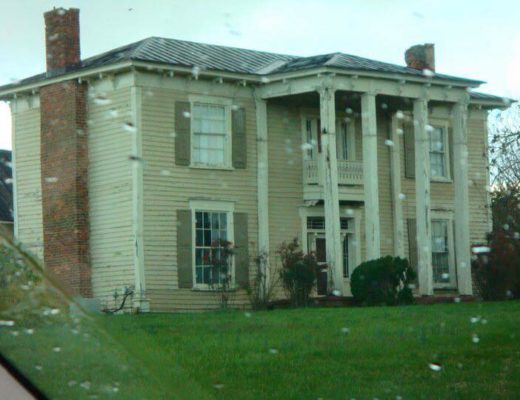If you’ve noticed, typically in the south, porch ceilings of older homes will be painted a blue or even a blue-green color. We typically paint all of our porch ceilings in a blue-green shade! Even when we’ve been at the Greenbrier Resort in White Sulphur Springs, we’ve noticed the porch ceilings are all a certain shade of blue. You may be asking yourself, ‘why?’, well read on to find out and see some examples!




Haint blue, is a traditional light blue paint color that is said to ward off evil spirits, known as “haints.” As it is to be called the “color of heaven” or the color of water, neither can be crossed by evil spirits. The practice of painting porch ceilings, window sills, and door frames with this color can be traced back to the 1800s to the Gullah Geechee communities of the southeastern United States, particularly in the Lowcountry region of South Carolina and Georgia. If you’d like to know more about the Gullah Geechee people, click HERE. The word “haint” itself is derived from the Gullah culture and refers to restless spirits or ghosts. The blue color came from the indigo plant, a crop that was cultivated across some southern states in the 17/1800s.



The origins of haint blue can be linked to the beliefs and traditions of the Gullah people, who brought over their African spiritual beliefs and combined them with elements of Christianity. They believed that haint blue had the power to protect homes from malevolent spirits. Although today, the true meaning behind this tradition can be muddled.




In addition to its spiritual significance, haint blue also served a practical purpose. The blue color was thought to deter insects and birds from nesting around the home, as they would mistake the blue ceiling for the sky and avoid nesting there. Over time, the use of haint blue has transcended its original cultural and spiritual significance, and it has become a popular design choice in Southern architecture and beyond. The serene, light blue hue is appreciated for its calming and cooling effect, and it continues to be used in contemporary home design as a nod to its rich cultural history.
Written by Emma Bowers.






